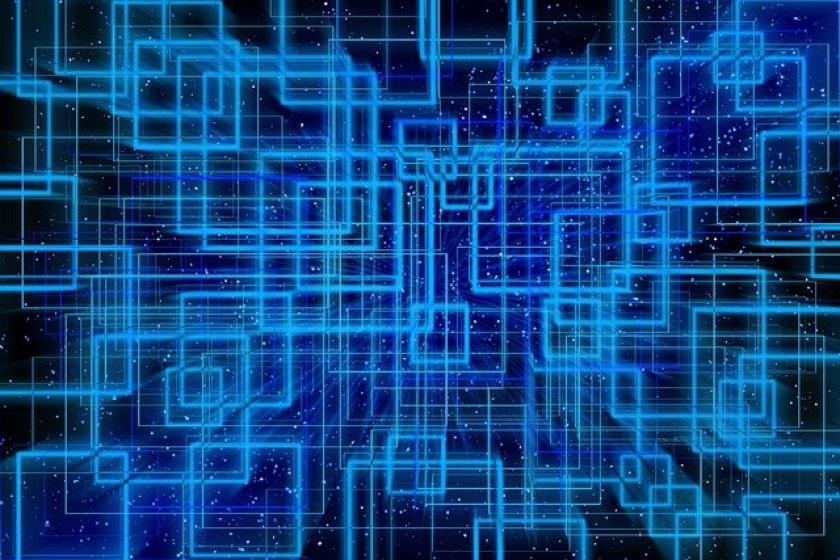The AC/DC Conundrum
Simply put: DC power is a ‘cleaner’ energy source. Traditional AC distribution generates energy waste and requires more work to be functional in a data center.
March 31, 2022

Why all the years of handwringing about DC power in the data center when some consider it to be the more efficient option? Perhaps it goes back to Thomas Edison battling with the duo of George Westinghouse and Nikola Tesla for the United States’ energy contract in what’s known as the War of the Currents.
Edison developed a direct current (DC) system, where electric current flows continuously in one direction, which had been the U.S. standard. That was until Westinghouse introduced an alternating current (AC) system, where the current’s flow constantly alternates. AC had been the standard in Europe and was further improved through Tesla’s application of transformers and the AC motor. It’s extraordinary to think that after all this time, there is still an AC/DC conundrum happening, and—nowhere is it more prevalent than in the data center.
The issue: power train supplying a data center has historically been implemented using AC power. From generation to transmission and right down to the point-of-usage, the power has been AC. But all this alternating current needs to get stepped down in voltage before being converted to DC power by the power supply residing in a server, network switch, router, load balancer, or storage application. Although alternating current can be converted to different voltages relatively easily using a transformer, a tremendous amount of inefficiency comes with this process which requires numerous DC/AC conversions where 5-20% of energy is lost as heat that ultimately must be cooled by expensive systems furthering financial burden.
Power transformation yields inefficiency
Transforming AC power to lower and more usable voltages within a data center is indeed a case study in inefficiency. In fact, transformers are sometimes marketed as less inefficient than their competitors—truly a lesser of the two evils approach to gain customers.
The problem with transforming AC power to DC power is that it creates a byproduct that must be dealt with by data center managers. Each power conversion within the facility, either through UPS equipment or PDUs at the rack level, generates a trifecta of waste:
At the transformation.
At the conversion.
In the form of additional energy needed to cool the heat generated.
Why do data center operators continue accepting all this waste? Because AC power is still the primary infeed to a data center. It’s a current conundrum, and as far as data centers are concerned, Edison’s DC power system seems to be the more efficient option.
DC is the better power option
Simply put: DC power is a ‘cleaner’ energy source. Traditional AC distribution generates energy waste and requires more work to be functional in a data center. For example, consider these phrases that are part of the typical job description of any data center manager, mitigator of harmonic loads, and balancer of phases. The type and rating (k-factor) of a transformer will determine how well it can handle harmonics generated by load, and the cost of the transformer increases with the k-factor. DC power does not come with this unnecessary baggage and simplifies the electrical job description.
Another reason why DC could return is its compatibility with environmentally friendly electronic devices in green data centers, which utilize solutions such as solar panels, fuel cells, and energy-efficient lighting systems (LEDs) that all generate or work with direct current. For this reason, DC may have a surge in popularity for the sake of using renewable energy sources.
Reducing the AC waste
The power chain from the building entrance to the IT loads contains several power converters and transformers for each conversion, contributing to inefficiencies and power losses. Reducing the number of transformers and operating at a higher AC voltage improves efficiency and reduces electrical costs.
However, it seems AC conversion waste will still be with us for a bit longer, but proven solutions can help. When designing your data center power chain, consider using a 415V power distribution unit (PDU) that supports an infeed of 415VAC 3-phase to deliver 240VAC to the outlet—they don’t require a transformer in the PDU. This option helps to minimize conversion and distribution losses, minimize the size of copper cabling needed for power, and enables maximum power density for the rack, resulting in a more efficient data center.
However, conventional data center design is evolving. Designers and large data center operators are starting to implement DC power solutions. As they do this, DC power distribution becomes less of a theoretical discussion and more of a viable alternative.
Imagine data centers without all the equipment associated with transformation, conversion, and waste heat cooling. It’s not difficult to envision a simpler and more streamlined operation with tremendous advantages. Not only would you require fewer and smaller electrical rooms and less clutter in your white space, but you would also have a one-line power chain—with far fewer points of failure—meaning less equipment and CAPEX to operate and maintain.
Conclusion
One of the most compelling reasons to embrace DC in the data center is the extra white space for more revenue-generating racks. Until then, you can use an intelligent rack PDU that supports an infeed of 415VAC 3-phase and remove an AC transformer and all the waste associated with it. After all, the telecommunications industry has been powering its equipment with 48VDC power plants since the days of Alexander Graham Bell.
Zack Chauncy is a Product Manager of Power Distribution at Server Technology, a brand of Legrand.
Related articles:
Read more about:
Data center modernizationAbout the Author
You May Also Like




